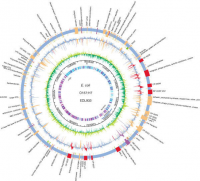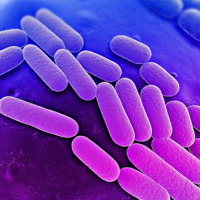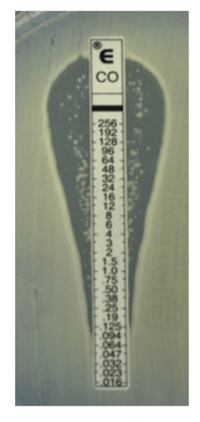Team I Genome Assembly Group: Difference between revisions
Vchivukula (talk | contribs) |
Vchivukula (talk | contribs) |
||
| Line 28: | Line 28: | ||
=='''Objective'''== | =='''Objective'''== | ||
This study on Klebsiella spp. is motivated by finding of Colistin heteroresistance in K. pneumoniae. "Genetically identical, but phenotypically distinct, subpopulation of colistin-resistant bacteria can mediate in vivo treatment failure" --David Weiss. | This study on Klebsiella spp. is motivated by finding of Colistin heteroresistance in ''K. pneumoniae''. "Genetically identical, but phenotypically distinct, subpopulation of colistin-resistant bacteria can mediate in vivo treatment failure" --David Weiss. | ||
[[File:Heteroresistant subpopulation.png|200px]] | [[File:Heteroresistant subpopulation.png|200px]] | ||
| Line 34: | Line 34: | ||
'''Figure 3'''. Heteroresistant subpopulation [4] | '''Figure 3'''. Heteroresistant subpopulation [4] | ||
According to Valvano et.al., heteroresistance is a variable response showed by a population to a specific antibiotic. | |||
== '''Methods''' == | == '''Methods''' == | ||
Revision as of 11:13, 28 February 2018
The group is conducting its discussions, planning, etc. on the Open Academic Environment. Our group is public.
Introduction
Bacterial Genomics
Figure 1. Bacterial Genomics [1]
Bacterial genomics is the discipline that studies the genome of a bacteria and includes all hereditary information of that bacteria. Bacterial genomics helps study bacterial evolution as well as determine the causative agent in disease outbreaks. Additionally, it helps identify bacterial pathogens (and antibiotic resistance) and how these pathogens interact with their host.
Figure 2. Klebsiella (http://healthcare.bioquell.com)
Features of Klebsiella[2,3]:
Klebsiella is a gram negative, non-motile rod shaped bacteria enclosed in a capsule. These bacteria can be found singly, in pairs or as short chains. Klebsiella are facultative anaerobes (oxidase negative) and can perform both anaerobic respiration and fermentation. The GC content in their DNA is approximately 57%.
Assembly
Assembly is the process of combining sequence reads into contiguous stretches of DNA called contigs.
Data
We downloaded 258 Klebsiella spp. (paired-end reads; 250 base pairs in length) from NCBI SRA database.
Objective
This study on Klebsiella spp. is motivated by finding of Colistin heteroresistance in K. pneumoniae. "Genetically identical, but phenotypically distinct, subpopulation of colistin-resistant bacteria can mediate in vivo treatment failure" --David Weiss.
Figure 3. Heteroresistant subpopulation [4]
According to Valvano et.al., heteroresistance is a variable response showed by a population to a specific antibiotic.
Methods
Pipeline (general workflow)
Pre-processing
Assembly
Algorithms
Burrows–Wheeler Transform(BWT)
De Bruijn graph
Results
Discussion
Conclusions
References
1. Perna, Nicole T., Guy Plunkett III, Valerie Burland, Bob Mau, Jeremy D. Glasner, Debra J. Rose, George F. Mayhew et al. "Genome sequence of enterohaemorrhagic Escherichia coli O157: H7." Nature 409, no. 6819 (2001): 529.
2. Bergey, David Hendricks, Robert Stanley Breed, Everitt George Dunne Murray, and A. Parker Hitchens. Bergey's manual of determinative bacteriology. Baltimore: Williams & Wilkins, 1934.
3. Wikipedia contributors, "Klebsiella," Wikipedia, The Free Encyclopedia, https://en.wikipedia.org/w/index.php?title=Klebsiella&oldid=821116734 (accessed February 27, 2018).
4. Jayol, Aurélie, Patrice Nordmann, Adrian Brink, and Laurent Poirel. "Heteroresistance to colistin in Klebsiella pneumoniae associated with alterations in the PhoPQ regulatory system." Antimicrobial agents and chemotherapy 59, no. 5 (2015): 2780-2784.



